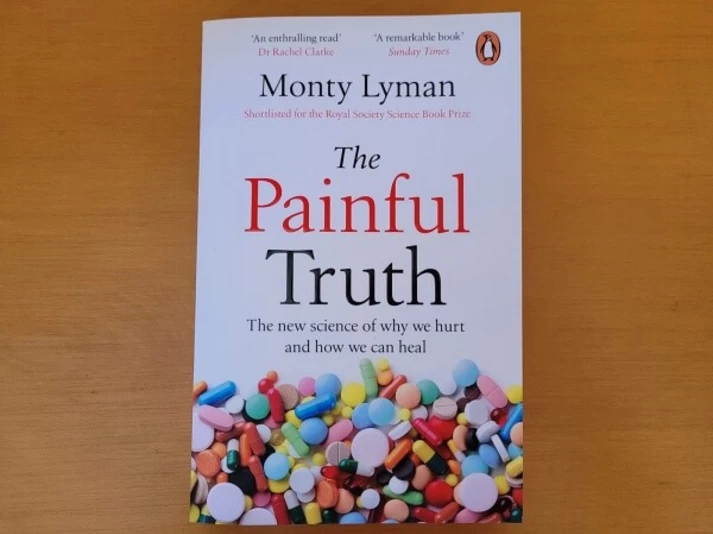The Painful Truth: The New Science of Why We Hurt and How We Can Heal.
By Dr Monty Lyman.
This is not a book about migraine, but about the nature and purpose of pain. However, anyone trying to deal with migraine, especially chronic migraine (the author prefers the term ‘persistent’ to ‘chronic’, as chronic can infer permanence, which is both disheartening and incorrect) would find pearls in this book.
The punchline is what the author calls ‘the painful untruth’ – the bogus belief that ‘pain is an accurate measure of injury in the body’. If this is believed, and a source of the pain cannot be identified, then pain is dismissed as ‘all in the mind’, with the implication that it is made up, not real and not treatable by physicians. This untruth has led to boundless suffering from all sorts of pain, including people with migraine, whose pain was often trivialised before the trigeminovascular system was identified as having a key role in migraine genesis.
The thrust of the book is to prove that pain is not a detector of damage, but a protective mechanism, a response to perceived danger. And that all pain is essentially ‘all in the mind’ – pain is not actually felt in the burnt finger or the crushed toe, but in the brain. If the brain is off-line, no pain is felt (e.g. when having surgery under anaesthesia). The brain can turn off or delay the experience of pain, even when serious tissue damage has occurred, when there are more immediate threats to life (e.g. soldiers injured in battle). And the brain can cause the experience of pain even when there is manifestly no injury (e.g. phantom pain after the amputation of a limb).
The book covers fascinating examples of people who have genetic mutations that mean they can’t feel pain (which is usually a life-limiting condition), can’t feel fear, have an unusually high pain threshold, or are indifferent to pain, even though they can feel it. These stories give insights into what pain is, and supports the definition of pain as ‘a personal experience that is influenced by varying degrees by biological, psychological and social factors.’ (1) They also provide some hope for future interventions to relieve pain, based on the variations in the nervous systems of those with these rare conditions.
Migraine is a disease where the brain over-reacts to a perceived threat, which we may not even be consciously aware of, and causes pain and other symptoms. We can try to dampen down the brain’s hyper-reactivity through medication, lifestyle changes, therapies to ameliorate stress. But sometimes it fires off regardless of what we do, like an overprotective guard dog barking at shadows.
And sometimes the overprotection becomes persistent. In these cases, research around the emotional aspects of pain has relevance and we need an approach that is broader than purely biomedical, that includes psychological and social influences on pain and disability. (2)
Anxiety and fear make pain worse, and the dreaded anticipation of a migraine attack can be a self-fulfilling prophecy. Reducing negative thoughts and emotions about pain won’t make it go away, but could help reduce the level of suffering associated with it.
Pleasurable experiences can help as well – research shows that pain reduces pleasure but also that pleasure can reduce pain. The theory is that pleasant sensations reduce the perception of threat in the brain and increase feelings of safety. I take from this that we should be prioritising pleasure – think of relishing your favourite food, listening to a loved piece of music, having that happy bedroom time as a type of pain therapy. Happy bedroom time for me includes having a deep, uninterrupted sleep, which is another powerful pain treatment.
This book might not offer specific insights into the management of migraine, but for anyone who is curious about what causes pain and wants to read a thorough debunking of the notion that pain must equal injury, this will satisfy.
Book details
- Published: 2021
- Publisher: Bantam Press
- ISBN: 9780143775645
References
- Raja, S. Carr, D. Cohen M, et al. 2020. The revised International Association for the Study of Pain definition of pain: concepts, challenges and compromises. Pain 161(9): 1976-82
- Rosignoli, C., Ornello, R., Onofri, A. et al. Applying a biopsychosocial model to migraine: rationale and clinical implications. J Headache Pain 23, 100 (2022). https://doi.org/10.1186/s10194-022-01471-3
Interested in reviewing a book for us? Email info@migrainefoundation.org.nz.


